When it comes to redesigning your bathroom, tiles play a big role in making the space look stylish, fresh, and welcoming. With so many tile designs and ideas out there, it can feel a bit overwhelming. But don’t worry! This blog will give you easy-to-follow ideas for bathroom tile design ideas that anyone can understand. Whether you have a small bathroom or a large one, these ideas will help you make your space both beautiful and functional.
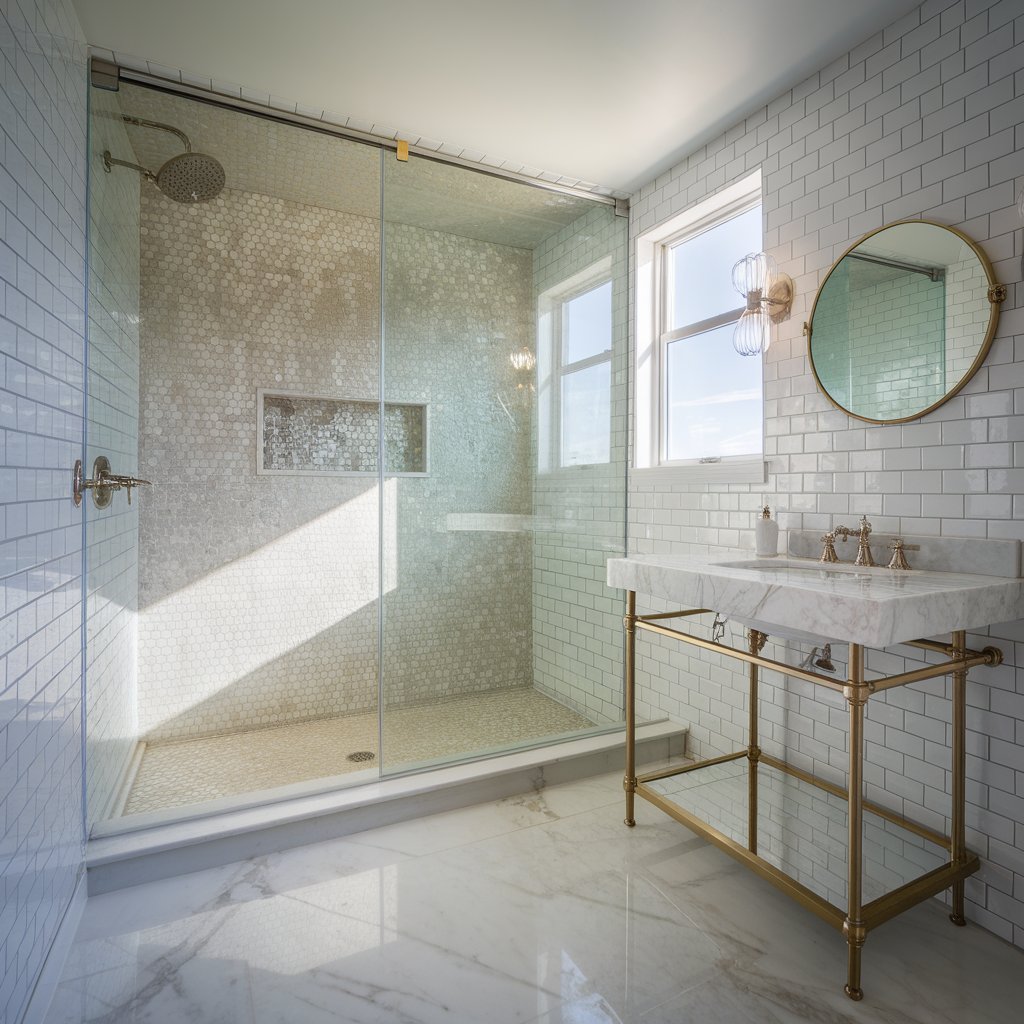
Why Bathroom Tiles Matter
Tiles are more than just a way to protect your walls and floors from water. They set the tone for the entire bathroom. With the right tile design, you can turn your bathroom into a cozy retreat, a bright, fresh space, or even a modern masterpiece. Tiles come in many materials, shapes, colors, and patterns, so you can customize your bathroom to fit your style.
Types of Bathroom Tiles
Before diving into design ideas, let’s talk about the types of tiles available for bathrooms:
- Ceramic Tiles: These are affordable, easy to clean, and available in many designs. They’re one of the most popular choices for bathroom walls and floors.
- Porcelain Tiles: Porcelain is a bit more durable than ceramic. It’s resistant to stains and water, making it great for bathrooms. Porcelain tiles are also available in many styles, including designs that mimic natural stone or wood.
- Glass Tiles: These tiles are usually used for accents or as part of a backsplash. They reflect light, making your bathroom feel brighter and more open.
- Stone Tiles: Marble, granite, and slate are some examples of stone tiles. These give bathrooms a natural, luxurious look. However, stone tiles need regular sealing to prevent water damage.
- Mosaic Tiles: Small and often colorful, mosaic tiles are great for creating patterns or borders. They can add a pop of personality to any bathroom.
Top Bathroom Tile Design Ideas
1. Classic White Subway Tiles
If you want a timeless and clean look, white subway tiles are a fantastic choice. These rectangular tiles have been a favorite for years because of their simple elegance. You can use them on your bathroom walls, especially around the shower or bathtub, for a crisp and clean look.
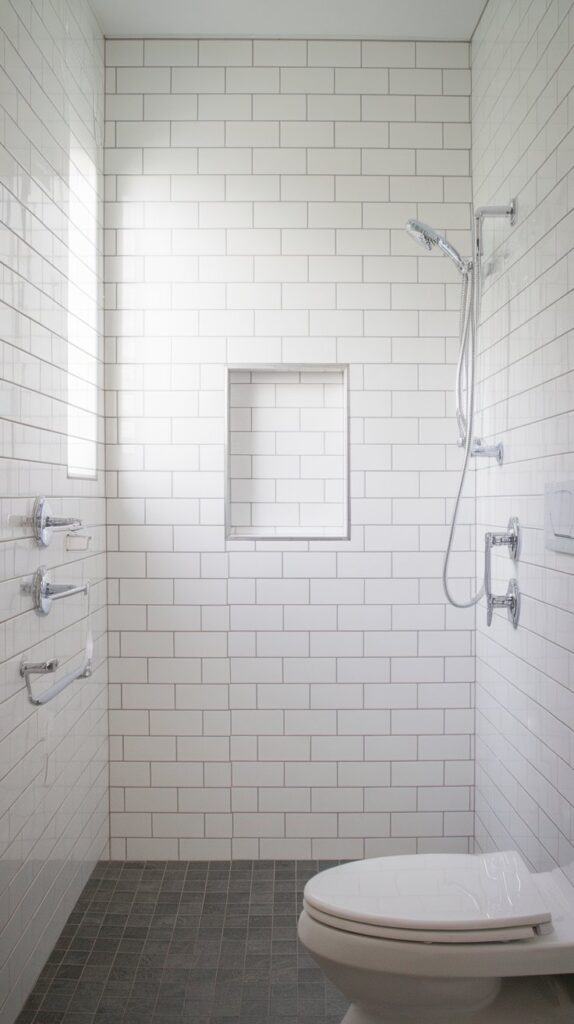
Pro Tip: If plain white feels too boring, add a colored grout like grey or black. This creates a more modern look without straying too far from the classic style.
2. Hexagon Tiles for a Modern Touch
Hexagon tiles are perfect if you’re looking for something modern and unique. These six-sided tiles work well on both floors and walls. You can choose a neutral color like white, grey, or black for a sleek look, or go bold with colorful hexagons for a fun twist.

Design Tip: Use small hexagon tiles on your floor for a retro vibe, or larger hexagon tiles on your walls for a more modern feel. A combination of small and large hexagon tiles can create a dynamic design.
3. Marble Tiles for a Luxurious Look
Marble has long been associated with luxury and elegance. Marble tiles, with their natural veins and patterns, make any bathroom feel high-end. If you want a spa-like atmosphere, marble tiles are the way to go. They can be used on the floors, walls, and even in the shower.

Maintenance Tip: Marble is a porous stone, so it requires sealing to prevent water damage and stains. However, with the right care, it can last a lifetime.
4. Herringbone Tile Pattern
The herringbone pattern adds visual interest without being too bold. This pattern is created by laying rectangular tiles at an angle, forming a V shape. You can use this pattern with subway tiles or even wood-look tiles for a natural feel.
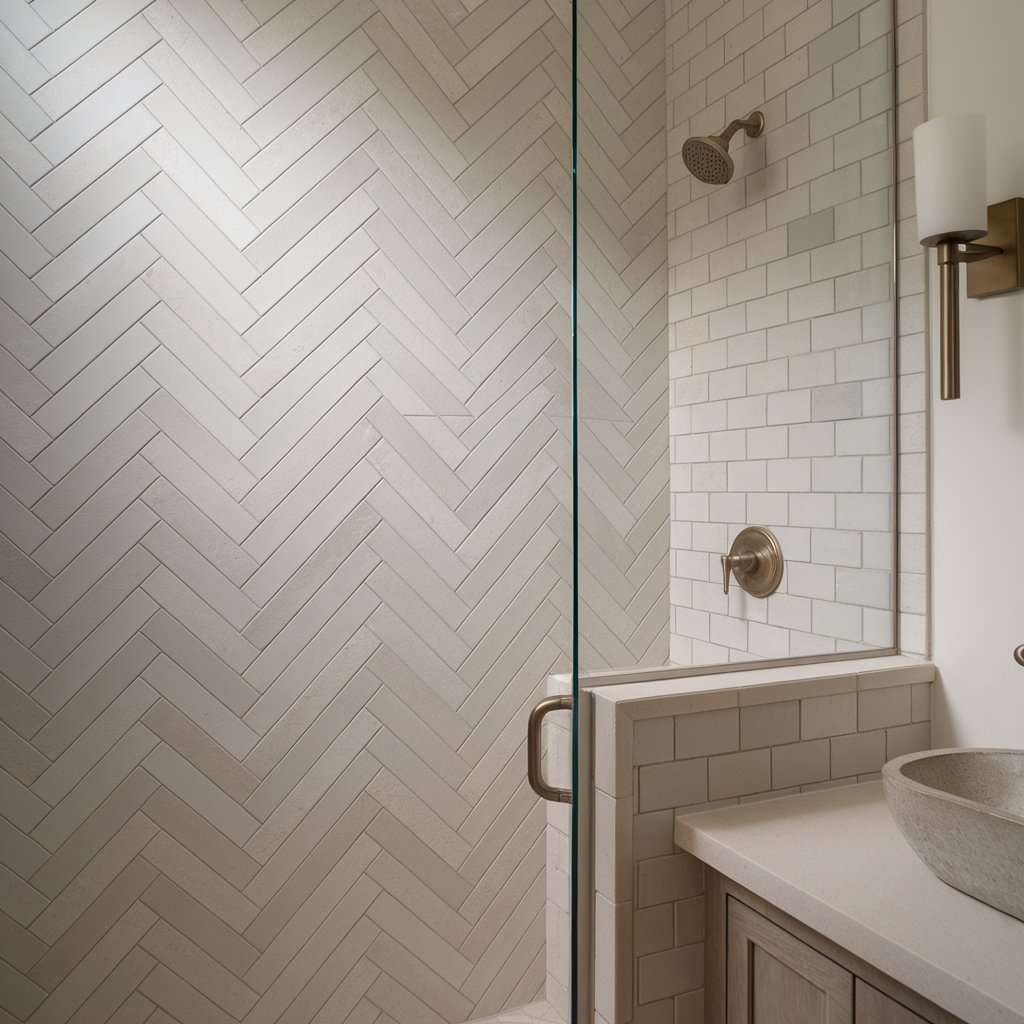
Pro Tip: A herringbone tile pattern works well as a backsplash behind the sink or as a statement wall in the shower. You can use contrasting grout to make the pattern pop even more.
5. Mix and Match Different Tile Shapes
One trend in bathroom design is mixing different tile shapes and sizes. For example, you can use large tiles on the floor and smaller mosaic tiles on the walls. Or, use square tiles in the shower and rectangular tiles around the sink area. Mixing and matching tiles allows you to create a unique design that reflects your personal style.

Design Tip: Stick to a consistent color palette to keep the look cohesive. You can mix shapes and patterns, but make sure the colors complement each other.
6. Patterned Tiles for a Bold Look
If you’re someone who loves color and creativity, patterned tiles are a perfect choice. Moroccan or Spanish-style tiles, for example, add a splash of color and intricate patterns to your bathroom. These tiles can be used as an accent wall or for the entire floor if you want a bold look.
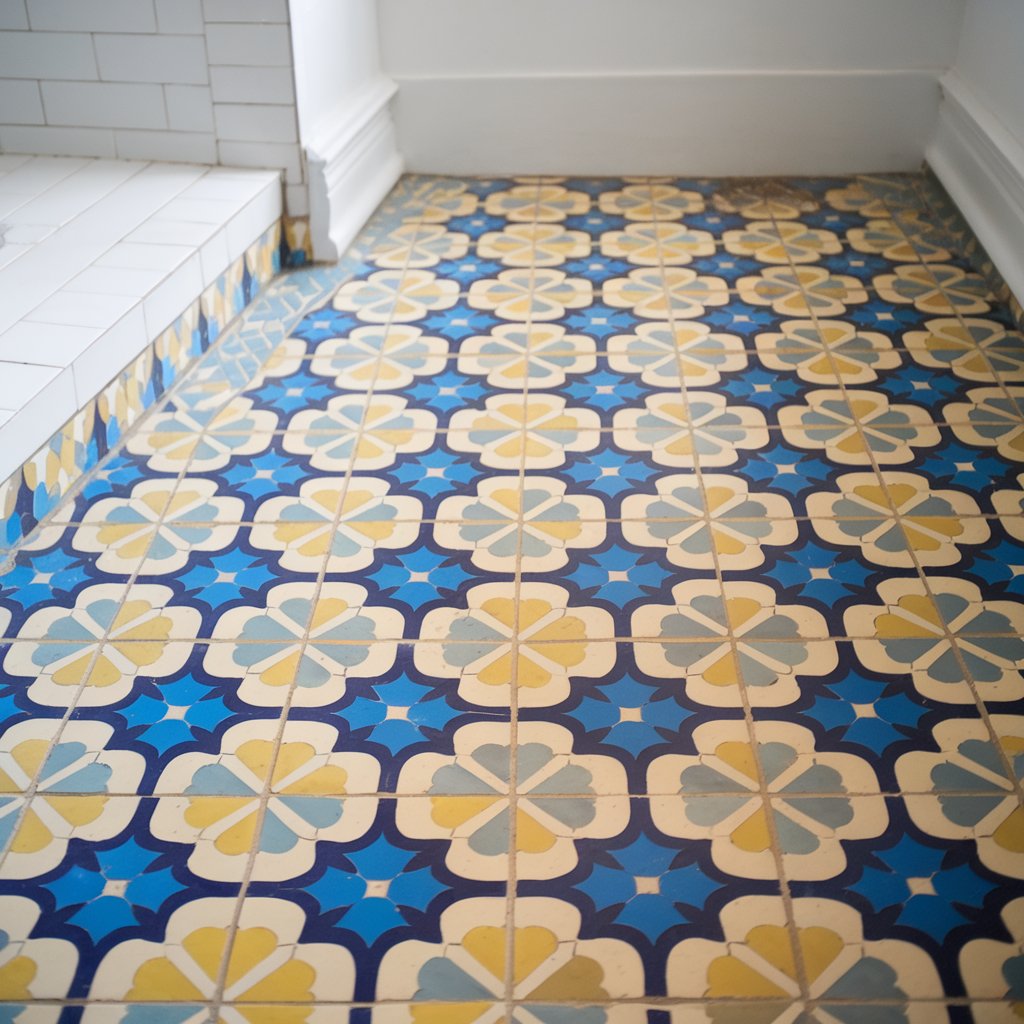
Design Idea: Pair patterned tiles with neutral-colored walls and fixtures to balance out the boldness. This way, the pattern becomes the focal point of the room without being too overwhelming.
7. Large Format Tiles for a Seamless Look
Large tiles create fewer grout lines, which gives the bathroom a smooth and uninterrupted look. This can make the space feel bigger and more open. Large format tiles are especially popular in modern and minimalist bathrooms.
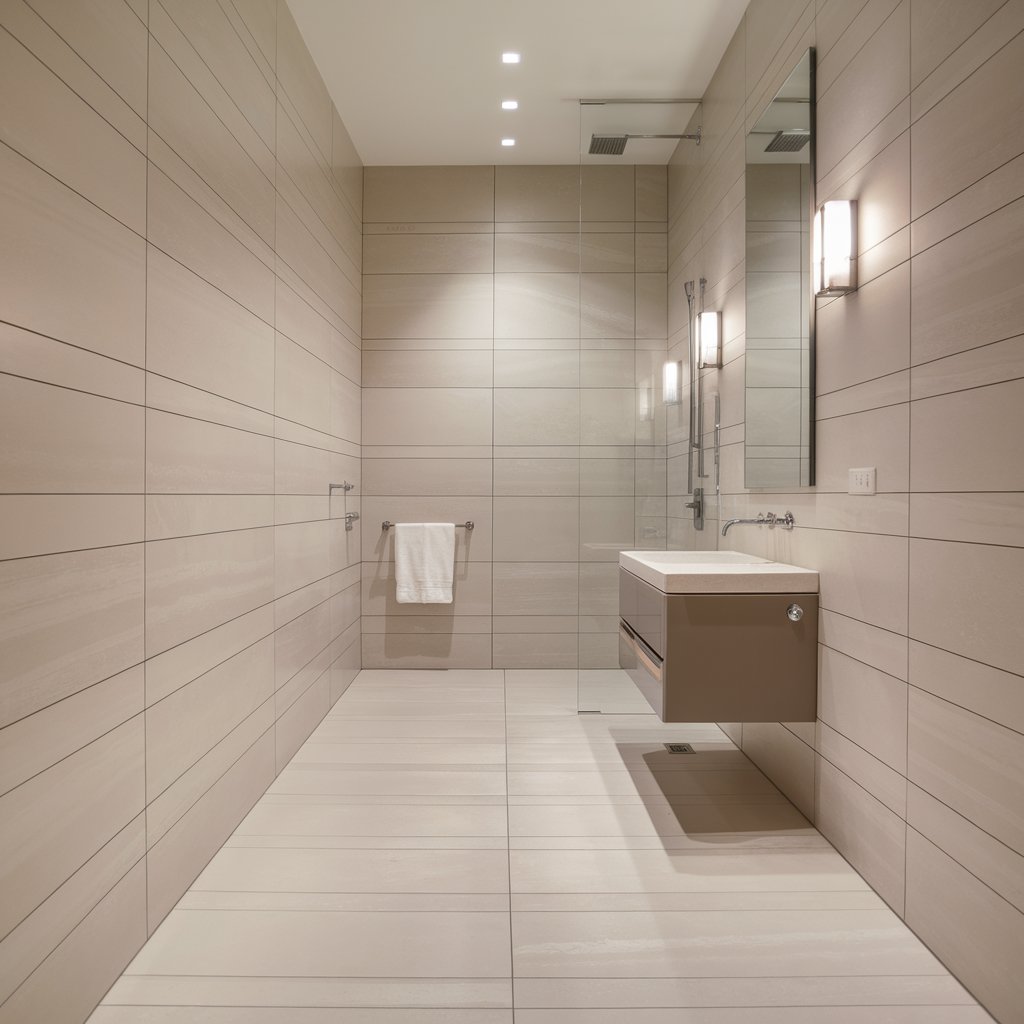
Tip for Small Bathrooms: Using large tiles in a small bathroom might sound counterintuitive, but it can actually make the space feel larger. The fewer grout lines there are, the less “busy” the space feels.
8. Natural Stone for a Rustic Feel
If you love a more rustic or earthy look, natural stone tiles are the perfect choice. Slate, travertine, and limestone give the bathroom a warm, grounded feel. These tiles are especially great for floors, but they can also be used on the walls for a natural look.
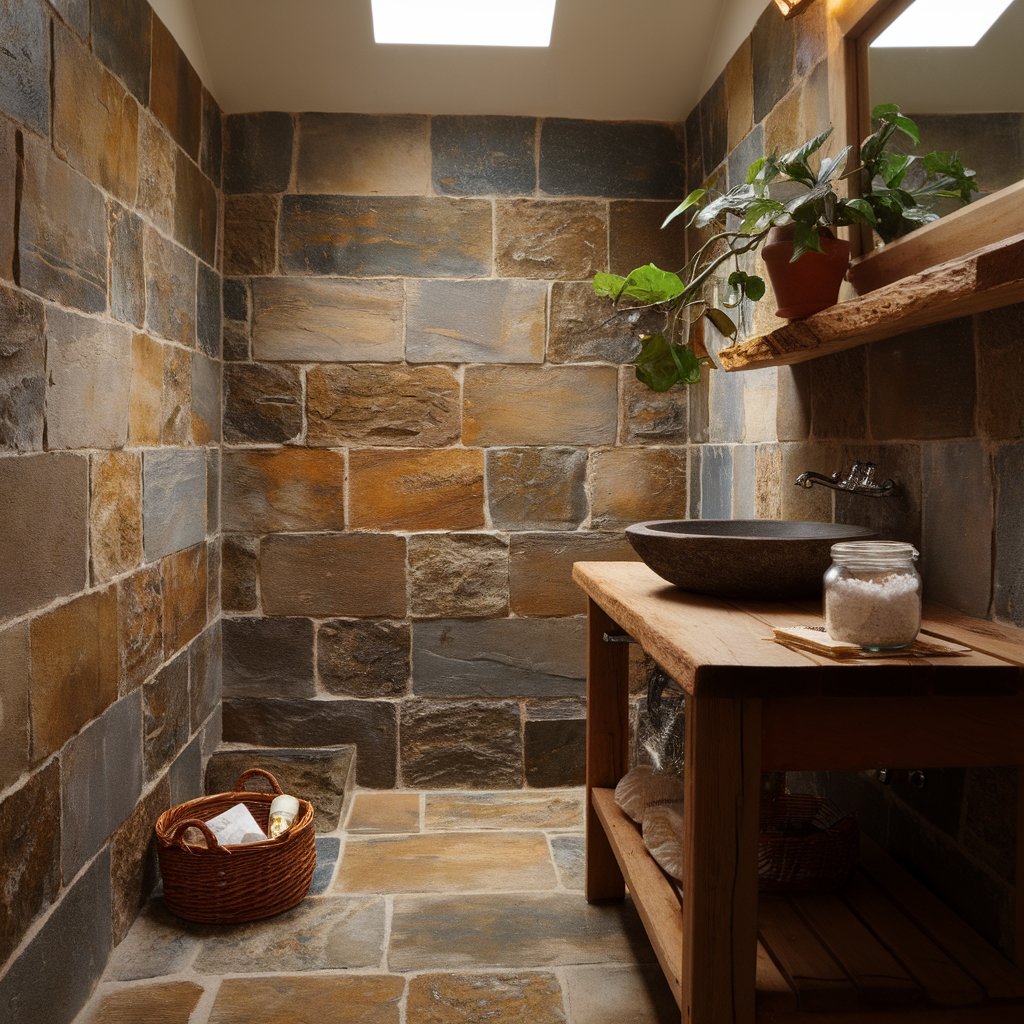
Maintenance Tip: Like marble, natural stone requires sealing to prevent water damage. However, the effort is worth it for the natural beauty these tiles provide.
9. Mosaic Tiles for Intricate Details
Mosaic tiles are tiny tiles that come in sheets and can be used to create intricate designs. These tiles are perfect for adding detail around the shower, sink, or even as a border along the bathroom walls. You can choose from glass, ceramic, or stone mosaic tiles to suit your style.

Design Tip: Use mosaic tiles as an accent with larger tiles for a balanced look. For example, a mosaic border along the shower wall can break up the solid look of large tiles.
10. Wood-Look Tiles for a Warm Vibe
Wood-look tiles give you the beauty of wood without the worry of water damage. These tiles are made from porcelain or ceramic but look like real wood planks. They add warmth and texture to your bathroom, creating a cozy and inviting space.
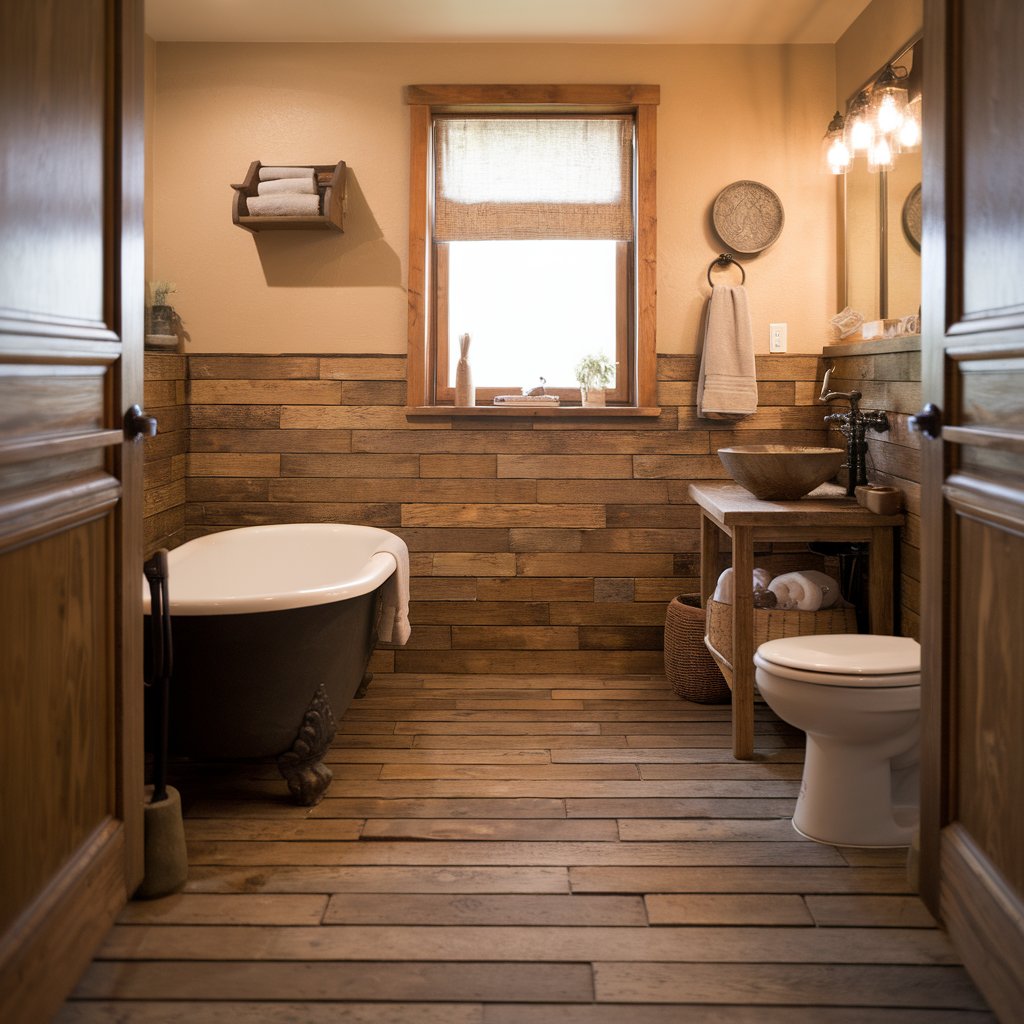
Design Idea: Use wood-look tiles on the floor to create the feel of a natural wood floor. You can even run them vertically on the walls to create a rustic accent wall.
Choosing the Right Tile for Your Bathroom
When picking bathroom tiles, there are a few things to keep in mind:
- Durability: Bathrooms are high-moisture areas, so choose tiles that are water-resistant and durable. Porcelain and ceramic are great choices for this.
- Size: For smaller bathrooms, consider using larger tiles to make the space feel bigger. Smaller tiles like mosaics work well as accents.
- Maintenance: Some tiles, like marble and natural stone, require regular sealing and care. If you want low-maintenance options, go for ceramic or porcelain tiles.
- Budget: Tile prices can vary widely. Ceramic tiles are budget-friendly, while natural stone and marble tend to be more expensive.
Top 5 FAQs About Bathroom Tile Design Ideas
1. What type of tile is best for bathroom floors?
Answer: The best tiles for bathroom floors are porcelain and ceramic tiles. They are water-resistant, durable, and easy to maintain. Porcelain is slightly more durable and stain-resistant, making it a great choice for high-traffic areas. You can also use natural stone tiles like slate or marble for a luxurious look, but they require regular sealing to prevent water damage.
2. How can I make a small bathroom look bigger with tiles?
Answer: To make a small bathroom look bigger, use light-colored tiles like white, beige, or light grey to reflect more light and create the illusion of space. Large format tiles with fewer grout lines also help create a seamless, spacious look. Placing tiles vertically on the walls can make the room feel taller, and using the same tiles on both the floor and walls can give a unified appearance, making the bathroom appear larger.
3. Are mosaic tiles a good choice for the entire bathroom?
Answer: While mosaic tiles are beautiful and can add intricate details, they are usually best used as accents rather than covering the entire bathroom. Large areas of mosaic tiles can make the space feel busy. However, they are perfect for borders, backsplashes, or feature walls where you want to add texture or a splash of color.
4. What’s the difference between ceramic and porcelain tiles?
Answer: Ceramic and porcelain tiles are both made from clay, but porcelain is denser and more durable. Porcelain is less porous, making it more resistant to water and stains, which is ideal for bathroom floors and high-moisture areas. Ceramic tiles, on the other hand, are more affordable and still offer a wide range of designs and finishes, making them a popular choice for bathroom walls.
5. How do I maintain and clean bathroom tiles?
Answer: For regular cleaning, use a mild soap or a pH-neutral cleaner and a soft cloth or sponge. Avoid using harsh chemicals, especially on natural stone tiles like marble or slate, as they can damage the surface. Sealing natural stone tiles periodically is necessary to protect them from water and stains. Grout lines can be scrubbed with a toothbrush and a baking soda paste to keep them clean and fresh.

